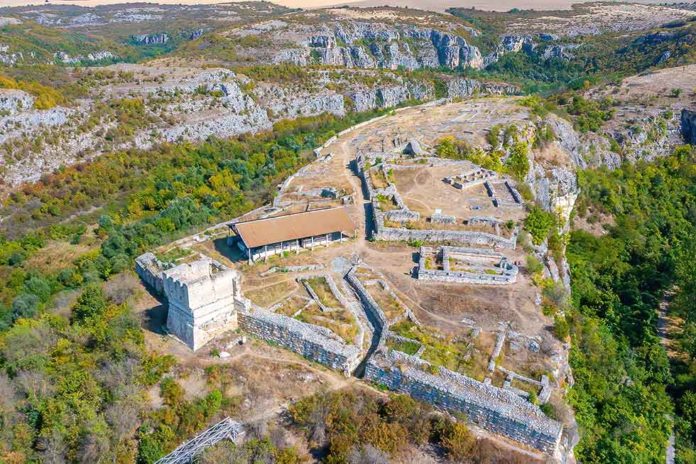Welcome to Cherven Fortress, one of Bulgaria’s most significant military, cultural, and religious centers during the Second Bulgarian Empire (12th-14th century). Nestled near the village of Cherven, 34 kilometers south of Ruse, this medieval Bulgarian city has a rich history and captivating mysteries.
A Name with Intrigue
The origin of the name “Cherven” has sparked various hypotheses. The most widely accepted theory suggests that it derives from the adjective “Cherven” meaning “red.” Another theory links the name to Russian settlers who fled their namesake city in Galicia after the Tatar invasion in the 13th century.
Early Byzantine Origins
Cherven boasted an early Byzantine fortress dating back to the 6th century. After Bulgaria became part of the Byzantine Empire in 1018, the attention of the new rulers turned to the ancient fortifications atop the Cherven ridge. Surviving walls were repaired and modified to meet the empire’s fortification standards.
The Rise and Fall
Cherven experienced both prosperity and decline during the Second Bulgarian Empire. In 1230, a powerful earthquake devastated the city, causing fires and widespread destruction. However, in 1235, the city became the seat of the Cherven Diocese, an important ecclesiastical center. In the spring of 1242, a retreating Tatar army left a path of devastation in the Rusenski Lom Valley, further impacting Cherven. In the 13th century, the Byzantine military commander Michael Glava Tarkhaniot captured the city during a campaign against Tsar Ivan Asen II.
The Flourishing City of the 14th Century
By the 14th century, the territory of Cherven encompassed over 1.8 square kilometers and featured a well-established infrastructure. Its fortified town is perched upon the extensive rocky ridge along the Cherni Lom River. Various crafts, including iron mining and processing, goldsmithing, construction, arts, and household crafts, thrived. This vibrant trade hub made Cherven a significant commercial center.
Ottoman Conquest and Migration
In the late 14th century, Cherven and other Bulgarian lands fell under Ottoman rule and suffered devastation. Legends and historical sources suggest that many residents migrated to the settlement known as “Rusçuk” during Ottoman rule, present-day Ruse.
Unveiling the Ancient Secrets
Cherven has piqued the interest of archaeologists and tourists alike. The first excavations took place in 1910-1911 under the guidance of Professor Vasil Zlatarski. Since 1961, continuous excavations have uncovered the city’s hidden treasures, providing invaluable insights into medieval Bulgarian history.
A Thrilling Destination
Today, Cherven Fortress is a testament to Bulgaria’s medieval heritage, welcoming visitors to its evocative ruins. The ongoing archaeological endeavors allow us to piece together the story of this once-majestic city, captivating the imagination of those who venture through its ancient walls.
A Journey Through Time
Step into history and immerse yourself in the allure of Cherven Fortress. Marvel at the remnants of a bygone era, envision the bustling streets and let the whispers of the past transport you to a time of knights, merchants, and spiritual enlightenment. Cherven Fortress beckons, inviting you to uncover its hidden tales and witness the enduring spirit of medieval Bulgaria.



